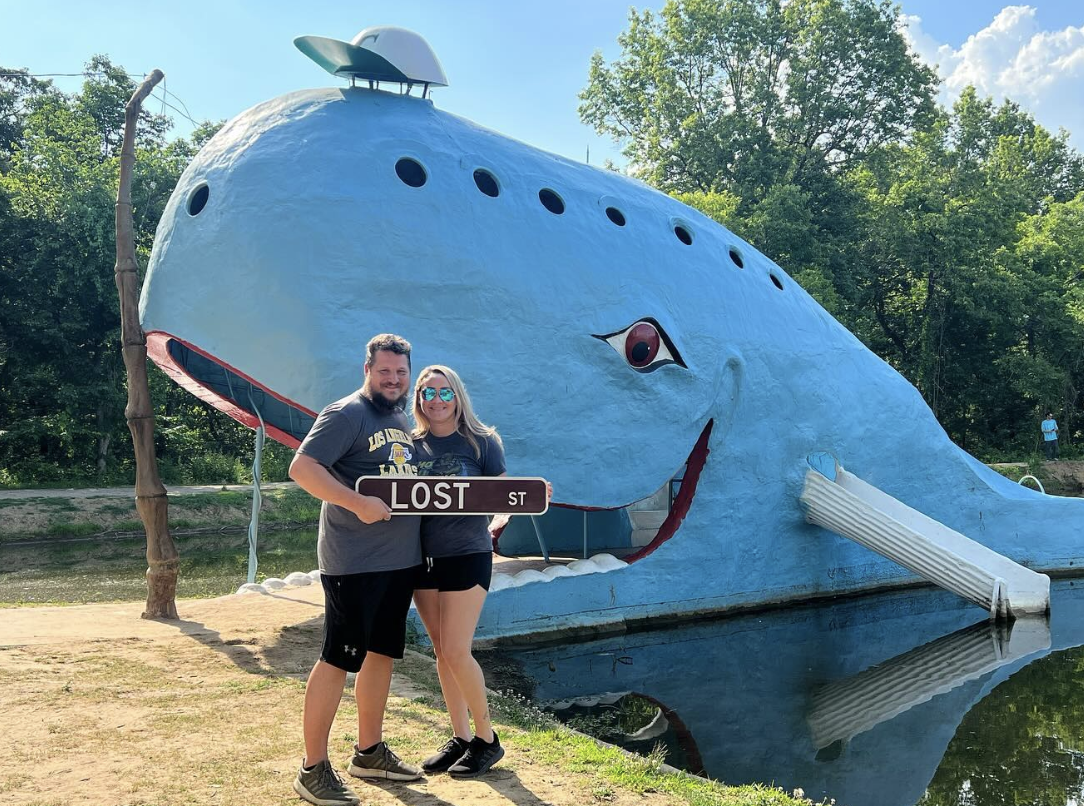YouTuber Billy LeBlanc’s girlfriend Natalie Clark died after eating raw oysters. What to know about 'flesh-eating' bacteria.

Natalie Clark, the girlfriend of popular YouTuber Billy LeBlanc, died after contracting a bacterial illness from eating raw oysters. LeBlanc also developed the infection and was severely ill. “I’m sure none of you know but I recently almost died. I was in the hospital for 12 days,” he wrote on Instagram. “Unfortunately Natalie didn’t make it and she passed away.” LeBlanc elaborated in the comments that both he and Clark “got vibrio vulnificus.”
Vibrio vulnificus infections are rare, but can often be deadly. So are raw oysters worth the risk? Here’s what experts want you to know about this so-called flesh-eating bacteria, why it’s becoming more common and if it’s OK to sometimes indulge in a raw bar.
What is vibrio vulnificus?
Vibrio vulnificus is a type of bacteria commonly found in brackish coastal waters (those that contain less salt than deeper seas, but more than freshwater) around the world. “It's rarely detected in the water during the colder months, but when temperatures reach around 59°F and above, they proliferate faster and will be found in greater numbers in the environment,” Kim Rodgers, a spokesperson for the National Oceanic and Atmospheric Association, tells Yahoo Life.
George Mason University microbiologist Brett Froelich says this form of vibrio (there are several in the family that make humans sick, including one that causes cholera and another that causes diarrhea) thrives in the same places oysters do, but it doesn’t infect the mollusks. Instead, oysters acquire the bacteria by filter feeding, meaning they let water pass through them, extracting just the particles that are nutritious to them, including v. vulnificus, explains Froelich, who specializes in the bacteria. “Oysters will concentrate these bacteria, so they are a hundred times more concentrated in the oysters than they are in the water,” he tells Yahoo Life. People can contract vibrio vulnificus from the water if they swim with open cuts or sores, but oysters are a more likely source due to this high concentration.
Do all oysters contain vibrio vulnificus?
In short, no, but it’s hard to know which ones do and which ones don’t. “A lot of times it will be like a whole family ate oysters, and one person got sick,” says Froelich.
Vibrio vulnificus bacteria are common along the Gulf Coast of the U.S. Their preference for warmer waters also means an oyster is more likely to contain v. vulnificus in the summer months. However, with the onset of climate change has caused bacteria to emerge during winter and farther north.
Even so, human cases remain rare. Between 150 and 200 people develop vibrio vulnificus infections annually in the U.S., the Centers for Disease Control and Prevention estimates. For comparison, tens of millions of pounds of oysters are harvested every year, so the odds of contracting a vibrio vulnificus infection appear to be low.
What does vibrio vulnificus do to people?
Once infected, the bacteria multiply at lightning speed in the human body. “It can be as little as one day from when you eat an oyster [when] you wake up and are in a bad way,” Froelich says. You might start feeling unwell within as little as six hours, but he says that often people will go to bed and wake up to find purple or black lesions on their arms and legs. “Those are filled with bacteria, and internally, your entire blood system is infected at this point, they are breaking down and consuming your tissues,” says Froelich — hence the name “flesh-eating bacteria,” though other bacteria behave this way too.
Treatment requires removing the infected flesh, which often means amputation and purging the bacteria from the bloodstream with intravenous antibiotics. But unfortunately, it’s sometimes too late by the time people get treatment, and the fatality rate for vibrio vulnificus is 20%, according to the CDC.
Before you give up oysters, remember this: Vibrio experts still eat them, with some precautions
Despite his knowledge of vibrio vulnificus in oysters, Froelich still eats them, even raw (though he prefers cooked). Like most foods, properly cooking oysters will kill the vast majority of bacteria they contain. But, unlike with ceviche, dousing your raw oysters with vinegar, hot sauce or lemon won’t make them safe (just more delicious). Even an oyster shot — containing one oyster and a spirit, often vodka — won’t eliminate vibrio bacteria, because, like chicken, the pathogens are deep in the food’s tissue. A vibrio-contaminated oyster isn’t the same thing as a “bad” oyster, says Froelich; they won’t smell, look or taste off.
There are some things you can do to reduce your risk, however. “I just don’t think people should eat raw oysters in the summer months, that will go a long way,” says Froelich. Keeping oysters cold after they are harvested should help, according to Rodgers. Doing so “is something that is regulated and practiced in states that have historically had vibrio infections and harvest for the raw market,” she says.
Anyone immunocompromised faces greater risk when eating oysters or any raw food. And, Froelich says, severe or fatal vibrio vulnificus infections are most common in males over 40 and people with liver damage from overconsumption of alcohol or hepatitis, though he says that many are unaware of these issues before they get sick.
Ultimately, your best defense is to “be aware this disease exists,” says Froelich. “If you eat oysters and don’t feel well, go immediately to the hospital. If you can get there in a 24- to 72-hour period, you might be OK.”
And don’t worry too much. “Oysters can be eaten safely,” says Froelich. “I am very much pro-oyster.”


